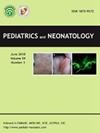Effectiveness and safety profile of introducing less invasive surfactant administration in management of respiratory distress syndrome: A retrospective cohort study in a tertiary neonatal unit in Hong Kong
IF 2.1
4区 医学
Q2 PEDIATRICS
引用次数: 0
Abstract
Background
The objective was to evaluate the efficacy of introducing less invasive surfactant administration (LISA) for management of preterm neonates with respiratory distress syndrome (RDS).
Methods
This was a retrospective cohort study identifying preterm neonates with RDS born between 2017 and 2022 in a tertiary neonatal unit, where LISA was introduced in January 2020. Time trend analysis comparing cohort of neonates born before (2017–2020) and after LISA introduction (2020–2022) was performed. The primary outcomes were incidence and severity of bronchopulmonary dysplasia (BPD). Multivariable regression models were used to estimate the association between introducing LISA to RDS management and health and safety outcomes.
Results
In total, 261 neonates with RDS were included (114 born after LISA was introduced). Neonates receiving invasive surfactant administration had lower gestational age, birth weight, lower Apgar scores, and higher oxygen requirement, compared to those receiving LISA. In the time trend analysis, introduction of LISA was associated with lower incidence of BPD (odds ratio (95% confidence interval) 0.34 (0.16, 0.72)), and lower severity of BPD (0.31 (0.16, 0.59)). Pre- and post-LISA period showed similar treatment safety profiles.
Conclusion
Introduction of LISA was associated with improved prognosis in neonates with RDS in Hong Kong.
在呼吸窘迫综合征的治疗中引入微创表面活性物质的有效性和安全性:香港一家三级医院新生儿科的回顾性队列研究。
背景:目的是评估采用微创表面活化剂给药(LISA)治疗呼吸窘迫综合征早产儿的疗效:目的:评估对患有呼吸窘迫综合征(RDS)的早产新生儿采用微创表面活化剂给药(LISA)的疗效:这是一项回顾性队列研究,研究对象是2017年至2022年期间在一家三级新生儿病房出生的RDS早产新生儿,该病房于2020年1月引入了LISA。对 LISA 引入前(2017-2020 年)和引入后(2020-2022 年)出生的新生儿队列进行了时间趋势分析比较。主要结果是支气管肺发育不良(BPD)的发病率和严重程度。多变量回归模型用于估算在 RDS 管理中引入 LISA 与健康和安全结果之间的关联:共纳入了 261 名患有 RDS 的新生儿(其中 114 名是在引入 LISA 后出生的)。与接受 LISA 治疗的新生儿相比,接受侵入性表面活性物质治疗的新生儿胎龄、出生体重较低,Apgar 评分较低,需氧量较高。在时间趋势分析中,引入 LISA 与 BPD 发生率降低(几率比(95% 置信区间)为 0.34 (0.16, 0.72))和 BPD 严重程度降低(0.31 (0.16, 0.59))有关。LISA前后的治疗安全性相似:结论:LISA的引入改善了香港RDS新生儿的预后。
本文章由计算机程序翻译,如有差异,请以英文原文为准。
求助全文
约1分钟内获得全文
求助全文
来源期刊

Pediatrics and Neonatology
PEDIATRICS-
CiteScore
3.10
自引率
0.00%
发文量
170
审稿时长
48 days
期刊介绍:
Pediatrics and Neonatology is the official peer-reviewed publication of the Taiwan Pediatric Association and The Society of Neonatology ROC, and is indexed in EMBASE and SCOPUS. Articles on clinical and laboratory research in pediatrics and related fields are eligible for consideration.
 求助内容:
求助内容: 应助结果提醒方式:
应助结果提醒方式:


